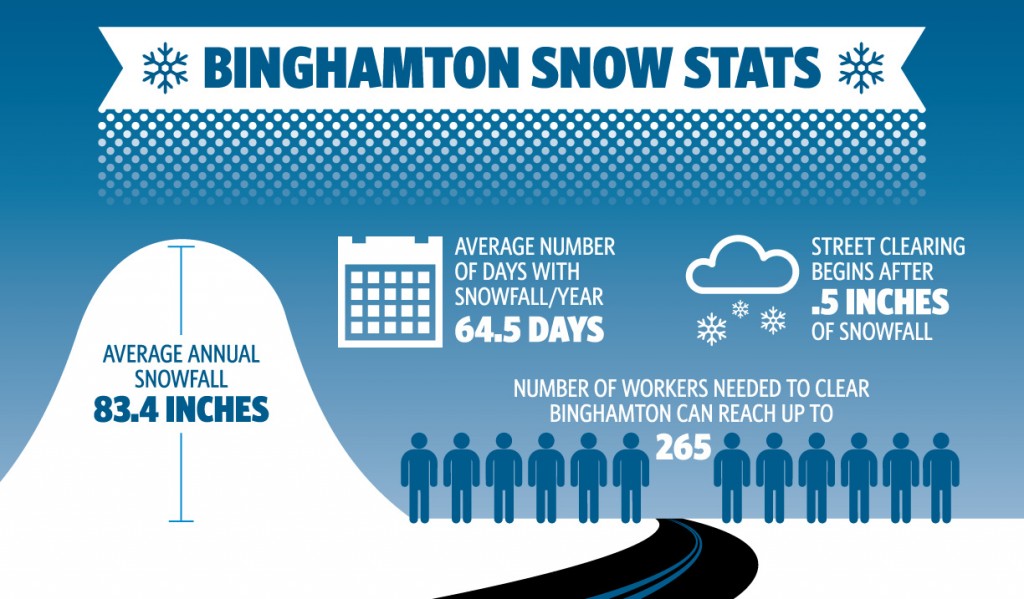With an average annual snowfall of over 80 inches, Binghamton University is the sixth snowiest university in the United States. Keeping the city and school safe and clear of snow is an operation that requires mass planning, as well as the cooperation of numerous departments on campus.
About 50 to 100 members of the BU grounds and custodial staff can be involved in cleanup after a typical snow storm. In extreme cases, such as heavier or midday storms, this number can reach up to 230 workers in order to clear the 6.3 miles of roads, 23 miles of walkways and 35 acres of parking lots, along with the 3.5 miles of service drives and four athletic fields.
The grounds crew begins this process when there is half an inch of snow accumulation with snow plows, brush trucks and snow blowers, according to the Physical Facilities snow storm procedures and Karen Fennie, communications director of Physical Facilities.
“A lot of it has to do with exactly what is coming and what is the timing,” said Chief of Police Timothy Faughnan. “The most difficult situations are when we have information that there is a storm coming at a really critical time, and usually the most critical time is during a morning or afternoon commute.”
Faughnan said that BU remains in close contact with the national weather service when making its decision to cancel classes. It is ultimately left up to President Harvey Stenger, and is often finalized in a 4 a.m. conference call, according to Donald Nieman, provost and executive vice president for academic affairs.
Off-campus students must be taken into account when the decision is made to cancel classes, according to Faughnan.
“If you live on campus, you can safely walk to the dining hall or to your class,” Faughnan said. “But off campus the road crews are still struggling to get the roads cleared.”
According to Off Campus College Transport (OCCT) Public Relations Coordinator Tim Redband, bus service typically continues if classes are still in session. If the classes are cancelled in the morning, service will usually be cancelled for that day. Service continues for two hours following a midday cancellation. In the event of a route change, OCCT posts it on its website, Facebook page and Twitter.
“There may be circumstances that routes need to detour during a snow storm if the roads become impassable,” Redband wrote in an email.
Members of the Binghamton Department of Public Works target hilly areas first, along with primary and emergency roads. Clearing these areas can take around four hours, said Jonathan Yeager, the deputy commissioner for the Binghamton Department of Public Works.
There are 25-35 people from the street division and the public works department of the city of Binghamton that can respond to a storm, as well as a 20-person extra response team for night operations to alleviate the sanitation and street workers.
In the event of an unusually heavy snowfall, the snow removal volunteer program can be of assistance, calling on BU Physical Facilities staff who volunteered to help in severe cases.
“The biggest challenge is manpower — being able to rotate people enough so that we can give them a significant amount of rest,” Yeager said. “That’s a challenge, but we get it done.”



